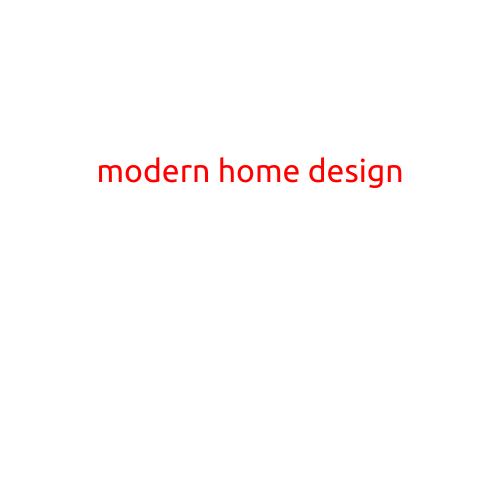
Modern Home Design: Trends and Inspiration
In recent years, modern home design has continued to evolve, incorporating fresh ideas and innovations that cater to the ever-changing needs and preferences of homeowners. Gone are the days of traditional and ornate designs; contemporary living spaces now prioritize functionality, sustainability, and aesthetic appeal. In this article, we’ll delve into the latest modern home design trends, exploring the innovative ways to shape the spaces where we live, work, and play.
Clean Lines and Minimalism
The modern home design aesthetic is characterized by clean lines, minimal ornamentation, and an emphasis on simplicity. Rooms are often designed with a neutral color palette, providing a blank canvas for individual expression. This minimalist approach allows for the elimination of visual clutter, creating a sense of calm and serenity.
Natural Light and Airy Spaces
Large windows, sliding glass doors, and skylights are becoming increasingly popular in modern home design. These features allow for an abundance of natural light, illuminating spaces and reducing the need for artificial lighting. Open floor plans and airy ceilings also contribute to a sense of spaciousness, making even small homes feel grand.
Innovative Materials and Textures
Modern home design has given rise to a plethora of innovative materials and textures. Some popular choices include:
- Reclaimed and recycled materials: Adding a touch of sustainability, these materials breathe new life into recycled wood, metal, and glass.
- Bold colors: Vibrant hues and statement walls add pops of color to modern spaces, while also creating a cozy atmosphere.
- Natural finishes: Wood, stone, and concrete provide a sense of authenticity, grounding modern designs in nature.
Ergonomic and Adaptive Spaces
In response to the growing emphasis on wellness and self-care, modern home design is incorporating features that prioritize comfort and flexibility. Some notable trends include:
- Built-in seating areas: Providing ample space for relaxation, these areas foster social interaction and connection.
- Flexible furniture: Modular furniture and storage solutions enable effortless reconfiguration, adapting to changing needs and lifestyles.
Smart Technology Integration
Modern home design is increasingly embracing smart technology, streamlining daily life with seamless connectivity and control. Some key features include:
- Voice-controlled systems: Voice assistants and smart home devices simplify daily tasks, from entertainment to lighting and temperature control.
- Wireless charging stations: Conveniently located, these stations ensure your devices remain powered up and within reach.
- Smart security systems: Advanced safety features and monitoring systems provide enhanced protection and peace of mind.
Water Conservation and Sustainability
As global concerns about water scarcity and sustainability continue to grow, modern home design is prioritizing eco-friendly practices. Some notable trends include:
- Low-flow fixtures: Water-efficient showers, toilets, and faucets reduce consumption and waste.
- Rainwater harvesting systems: Collecting and storing rainwater for irrigation, toilet flushing, and other non-potable uses.
- Solar panels and renewable energy: Generating electricity and reducing carbon footprints.
Conclusion
Modern home design is an ever-evolving reflection of our changing needs and values. By incorporating clean lines, minimalism, natural light, innovative materials, and adaptive spaces, these cutting-edge designs are redefining the way we live, work, and interact within our homes. With a focus on sustainability, technology integration, and wellness, modern home design is poised to continue shaping the future of residential spaces.





